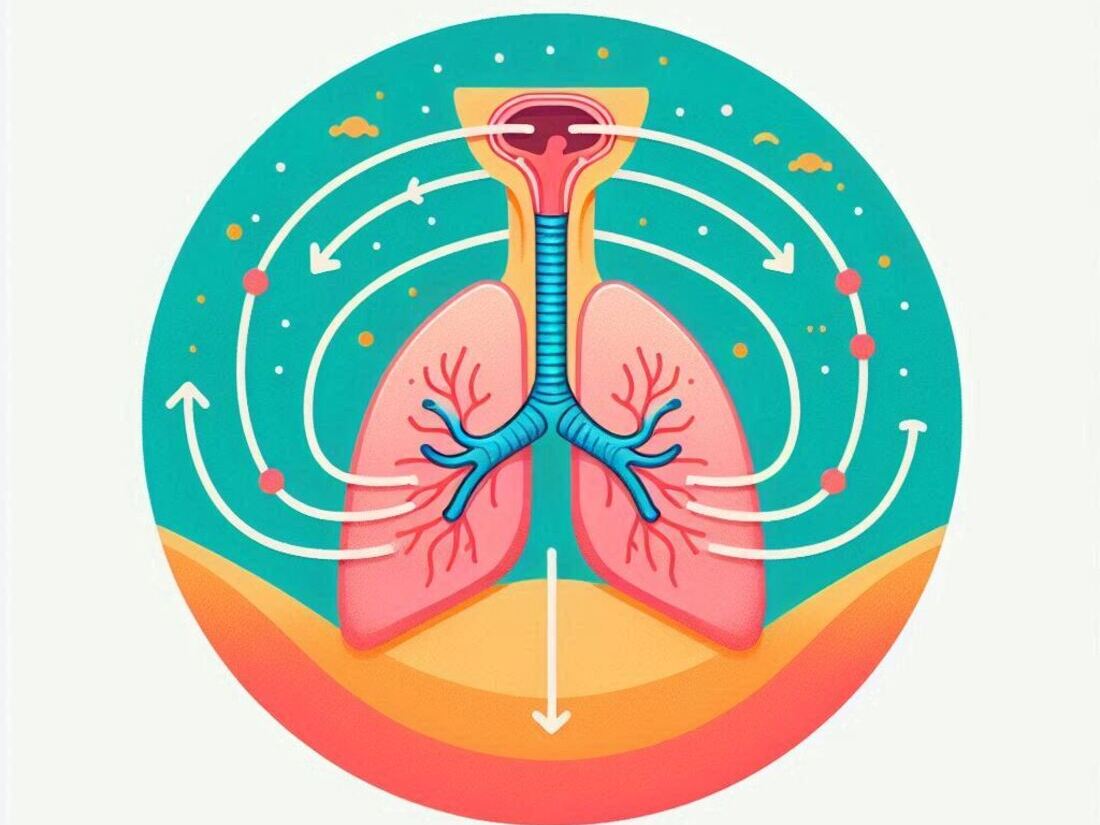Remember that nagging feeling of being under the weather?
Colds and flu can disrupt your life, leaving you feeling drained and miserable.
But what if there was a simple, natural way to strengthen your defenses and fight back?
The answer might surprise you: breathing exercises.

Beyond supplying oxygen to your body, mindful breathing can significantly enhance your immune system’s ability to combat illness.
By optimizing oxygen intake, reducing stress, and improving lymphatic drainage, specific breathing techniques can help you:
- Fight off viruses and bacteria more effectively.
- Shorten the duration and severity of colds and flu.
- Improve overall immune function.
Key Takeaways
- Breathing exercises are a powerful tool for boosting your immune system and fighting off illness.
- These techniques are simple, natural, and can be practiced anywhere, anytime.
- Regular practice can significantly improve your health and well-being.

A Personal Story
Last year, I was constantly battling colds and flu.
I felt sluggish, missed work, and just couldn’t seem to shake the feeling of being under the weather.
Then, I discovered the power of breathing exercises.
By incorporating them into my daily routine, I noticed a significant difference.
I felt more energized, recovered faster from minor illnesses, and even experienced less stress.
Now, I recommend these techniques to everyone I know!
Unlocking Your Immune Potential: Powerful Breathing Techniques
Now that you understand the potential, let’s explore some specific breathing exercises you can incorporate into your daily routine:
1. Diaphragmatic Breathing (Belly Breathing)

This natural breathing technique engages your diaphragm, the dome-shaped muscle below your lungs, for deeper and more efficient breaths.
How to do it
Lie down comfortably on your back with one hand on your chest and the other on your stomach.
As you inhale slowly through your nose, feel your belly rise (not your chest).
Exhale slowly through pursed lips, feeling your stomach sink back down.
Repeat for 5-10 minutes.
2. Alternate Nostril Breathing (Nadi Shodhana)

This technique balances the nervous system and promotes emotional regulation, helping your body better manage stress and inflammation.
How to do it
Close your right nostril with your thumb. Inhale deeply through your left nostril.
Close your left nostril with your ring finger and exhale slowly through your right nostril.
Inhale again through your right nostril, close it, and exhale through your left nostril.
Repeat this cycle for several minutes, alternating nostrils each time.
3. Kapalbhati Breathing (Skull-Shining Breath)

This technique stimulates the lymphatic system, which plays a crucial role in removing toxins and waste products from the body, further supporting immune function.
How to do it
Sit comfortably with your spine straight. Inhale deeply through your nose.
Exhale forcefully through pursed lips, engaging your abdominal muscles.
Repeat for several rounds, focusing on short, forceful exhalations.
Remember: Consistency is key! Aim to practice these breathing exercises regularly, even when you’re feeling well, to strengthen your immune system and build your defenses against illness.
Beyond the Breath: Additional Tips for a Strong Immune System
While breathing exercises are a powerful tool, remember to also:
- Get enough sleep: Aim for 7-8 hours of quality sleep per night to allow your body to repair and recharge.
- Eat a healthy diet: Focus on whole, unprocessed foods rich in vitamins, minerals, and antioxidants.
- Manage stress: Chronic stress can weaken your immune system. Practice relaxation techniques like meditation or yoga to manage stress levels.
- Wash your hands frequently: This simple hygiene practice can significantly reduce the spread of germs and viruses.
Scientific Evidence
Research suggests that specific breathing exercises can positively impact the immune system.
Studies have shown that regular practice of diaphragmatic breathing can increase the activity of natural killer cells, which play a vital role in fighting off infections.
Additionally, alternate nostril breathing has been linked to reduced inflammation and improved stress management, both of which can contribute to a stronger immune response.
Additional Breathing Techniques

For those seeking further options, techniques like “Lion’s Breath” and “Bhramari Pranayama” can also be explored.
Lion’s Breath involves a forceful exhalation with a roaring sound, while Bhramari Pranayama focuses on a humming sound during exhalation.
Both can help stimulate the immune system and promote relaxation.
Enhancing User Engagement
- Share your experiences: In the comments section below, share your personal stories about how breathing exercises have impacted your health.
- Ask questions: Have any questions about these techniques or other ways to boost your immune system? Feel free to ask!
- Connect with others: Join the conversation and connect with others who are interested in using breathing exercises for better health.
Conclusion

By incorporating these simple yet powerful breathing techniques into your daily routine, you can take a proactive approach to boosting your immune system and fighting off colds and flu.
Remember, consistency is key!
With regular practice and a healthy lifestyle, you can build a stronger, more resilient defense against illness and enjoy better overall health and well-being.
Disclaimer: This blog is for informational purposes only and should not be construed as medical advice. Please consult with your healthcare provider if you have any concerns about your health or underlying medical conditions.
Additional Information
Here are some research studies that support the claims made in the blog:
Diaphragmatic Breathing and Natural Killer Cells
- Correlation between alpha rhythms and natural killer cell activity during yogic respiratory exercise: This study found that participants who practiced yogic breathing techniques, including diaphragmatic breathing, had higher levels of circulating natural killer cells compared to those who did not practice.
Alternate Nostril Breathing and Inflammation
- Alternate nostril breathing: a systematic review of clinical trials: This review analyzed various clinical trials on alternate nostril breathing and found evidence for its potential to reduce inflammation in conditions like asthma and allergic rhinitis.
Alternate Nostril Breathing and Stress Management
- What Are the Benefits and Risks of Alternate Nostril Breathing?: This article on Healthline summarizes research findings on alternate nostril breathing, including a study that showed reduced perceived stress levels in men who practiced the technique daily for 3 months.
It’s important to note that while these studies offer promising evidence, further research is needed to fully understand the mechanisms and long-term effects of breathing exercises on the immune system.



